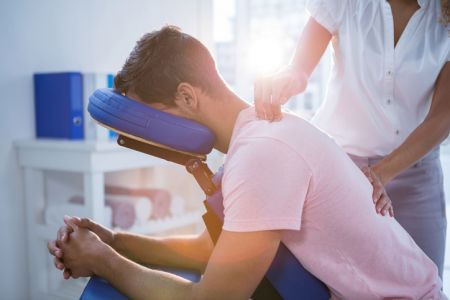By Cindy Williams, LMT

For thousands of years, touch has been used as a therapeutic tool. Why, then, do we need to conduct research to demonstrate that it works?
A primary reason is to continue to scientifically verify all the good things therapists see happening anecdotally with their clients every day. With scientific validation comes greater acceptance by the medical community and a better understanding of the cost-effectiveness of this preventive care tool.
Ultimately, massage research helps practitioners better serve their clients. And when it comes to pain, massage research continues to show us healthy alternatives for pain management.
Bodywork for Pain Reduction
Did you know that chronic pain affects about 100 million adults in the United States, with an estimated annual cost of $635 billion?1 That includes both direct medical expenditures and loss of work productivity. With that many people in pain, massage and bodywork must come to the forefront.
The reduction or relief of pain is one of the many benefits of massage. Add the effects hands-on therapies have on the immune system (your body’s defense, which can be weakened by pain) and the nervous system (which regulates digestion, sleep, and general outlook on life, and is also challenged when in pain), and massage is a clear recipe for a respite.
Documented research has been conducted on the efficacy of massage and bodywork for an array of pain conditions, including migraines, sports injuries, rheumatoid arthritis, postsurgical scars, and burn injuries. Let’s take a look at a few relevant findings for common pain challenges.
Pain Management
A study at the Flagstaff Medical Center in Flagstaff, Arizona, looked at 65 inpatients who chose to participate in a pain-management study that included documenting pain levels from medical, surgical, and obstetric units before and after treatments using a 0–10 analog pain scale. Patients received a varying number of massage sessions depending on the condition being addressed, with each session averaging 30 minutes in length. Swedish massage, acupressure, craniosacral therapy, cross-fiber myotherapy, and pressure points were the techniques applied.
Pain levels were reduced from approximately a 5 on the pain scale to approximately a 2. As a result, researchers concluded that the “integration of massage therapy into the acute care setting creates overall positive results in the patient’s ability to deal with the challenging physical and psychological aspects of their health condition. The study demonstrated not only a significant reduction in pain levels, but also the interrelatedness of pain, relaxation, sleep, emotions, recovery, and finally, the healing process.”2
Chronic Neck Pain
In 2015, a study was conducted on 38 women with chronic neck pain to assess whether integrative muscle movement technique (IMMT) is an effective treatment option for improving cervical range of motion and associated pain. This study specifically focused on comparing IMMT with Swedish massage. The women were divided into two groups. Both groups received two treatments per week over the course of four weeks, with half of the group receiving Swedish massage and the other half of the group receiving IMMT. Pain was measured before and after using a 0–10 analog pain scale, and cervical range of motion was also measured before and after the series of treatments.
The results of this study revealed that IMMT had a more positive therapeutic effect than Swedish massage alone and that cervical range of motion in all planes of movement had increased while pain had significantly decreased.3
Low-Back Pain
In 2011, more than 400 patients with low-back pain received one-hour massage treatments once a week for 10 weeks. Three groups were formed: one group received structural massage, one group received relaxation massage, and one group received usual medical care without massage. At the end of 10 weeks, the participants who received massage reported greater ability to be active and perform activities of daily living, spent less time in bed, and used less medication than the group that received the usual medical care. They also showed measurable improvement in sleep patterns, which has emerged as a common benefit among many participants in hands-on research studies for all types of pain.4
Talk to Your Therapist
This is only a small sampling of current research, yet the impact is far reaching and significant. If you are one of the millions experiencing pain today, be sure to consult with your therapist about the modalities that can best help you. Massage can, one body at a time, reduce the unacceptable number of people who are in chronic pain and help them return to a thriving life.
Notes:
1. Richard A. Deyo et al., “Report of the NIH Task Force on Research Standards for Chronic Low Back Pain,” Journal of Pain 15, no. 6 (2014): 569–85.
2. Rose Adams, Barb White, and Cynthia Beckett, “The Effects of Massage Therapy on Pain Management in the Acute Care Setting,” International Journal of Therapeutic Massage & Bodywork 3, no. 1 (2010): 4–11.
3. B. G. Rohe et al., “Experimental Integrative Muscular Movement Technique Enhances Cervical Range of Motion in Patients with Chronic Neck Pain: A Pilot Study,” Journal of Alternative and Complementary Medicine 21, no. 4 (April 2015): 223–8.
4. Daniel C. Cherkin et al., “A Comparison of the Effects of 2 Types of Massage and Usual Care on Chronic Low Back Pain: A Randomized, Controlled Trial,” Annals of Internal Medicine 155, no. 1 (July 2011): 1–9.




